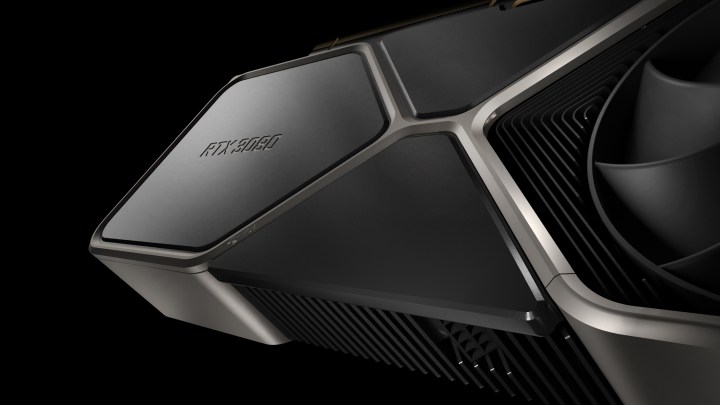
Nvidia announced a new step to combat cryptocurrency mining demand for its RTX 30-series graphics cards. Starting in late May, newly manufactured RTX 3080, 3070, and 3060 Ti graphics cards will have a reduced Ethereum hash rate. From Nvidia’s point of view, this should help “get more GeForce cards at better prices into the hands of gamers everywhere.”
This isn’t Nvidia’s first attempt at limiting crypto mining. The RTX 3060 also had an ETH hash rate limiter, which users were able to remove almost immediately after Nvidia accidentally released a beta driver that removed the restriction. The new Lite Hash Rate, or LHR, graphics cards won’t be susceptible to the same problem. These new cards come with a completely new GPU inside that should make the hash rate limit impossible to bypass.
Because it’s a new GPU core, the ETH limit isn’t retroactive. “This reduced hash rate only applies to newly manufactured cards with the LHR identifier and not to cards already purchased,” Matt Wuebbling, vice president of Global GeForce Marketing, explained in a blog post. That shouldn’t make a difference for gamers, though. LHR and non-LHR models are identical outside of the limited hash rate.
Wuebbling says that updated cards will have an identifier “in retail product listings and on the box.” Nvidia’s partners haven’t always been consistent with messaging in the past, though.
We originally expected Nvidia to refresh the entire Ampere line with new GPU cores, but there are two cards missing. The post doesn’t mention the RTX 3090 or base 3060. All RTX 3060 cards shipped with an ETH hash rate limiter, and Nvidia isn’t creating any new models. The RTX 3090 hasn’t seen much of an impact from Ethereum mining demand, according to Nvidia, so it won’t receive the LHR treatment at this time.
Although the new limiter should make newly manufactured cards easier to find, it’s far from a holistic solution to the GPU shortage that’s been going on for the better half of a year. Demand has driven prices up as much as 300% in some parts of the world, and a global semiconductor shortage has caused manufacturing issues.
Nvidia knows that the shortage is ongoing. However, the new LHR cards should reduce demand from cryptocurrency miners and hopefully drive them toward Nvidia’s CMP (Cryptocurrency Mining Processor) range. If that happens, gamers will just need to compete with scalpers.




